Rebel Island Fleet
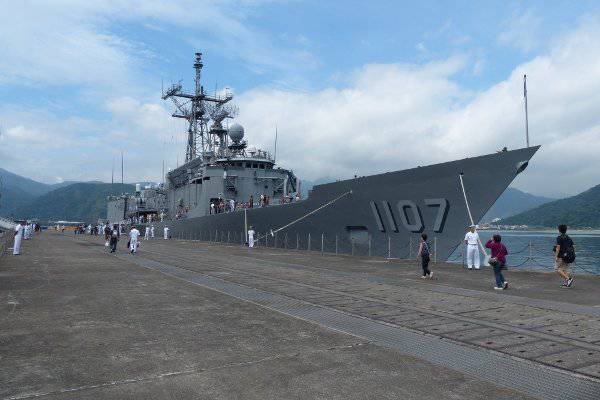
The Navy of the Republic of China is the sixth largest in the Asia-Pacific region. The honorable sixth place is not much quoted in our world, however, this is a good result for a small island off the coast of China.
The armed forces of the Chinese Republic are no longer the guarantor of its security - in 2013, the trade between mainland China and Taiwan exceeded 100 billion. The war and forceful annexation of the rebellious island is unprofitable for the ruling elites of both countries. Nevertheless, the global industrial giant, whose size is smaller than the Moscow region, continues to build up its muscles and is one of the most militarized states in the world.
Taiwan is an island, therefore, sea communications are of absolute importance to it. Despite the absence of any real threats and strong support from the US Navy, the inhabitants of the island continue to slowly improve their own fleet: the ship’s personnel is being updated, new aircraft and naval equipment are being purchased in the interests of the Navy weapons. There is no practical benefit from this: in case of a hypothetical conflict with China, the Air Force and the PLA Navy will deal with Taiwanese tins in a couple of hours. Taiwan is unable to carry on military power with mainland China. Then why did Taiwan need war games?
First, it is prestige. Secondly, Taiwan can trivially afford it.
From other "amusing" regional fleets, representing a gathering of the same type of trash, decommissioned from the US Navy and the fleets of European states, the Taiwan Navy compares favorably with a compromise between the old proven designs and state-of-the-art equipment. The Navy of the Republic of China has a number of completely unique ships, each of which is worthy of the berth of the Naval Museum or the exhibition of the exhibition of modern art. I’m not afraid to say that there are no such ships in the world anymore!
Destroyers of the destroyers of the type Kee Lung - 4 units
Kurush, Daryush, Nadir and Anushirvan were built on American shipyards by order of the Iranian Navy, but a misunderstanding occurred - the Iranian revolution of 1979 and the expulsion of the shah put an end to further military-technical cooperation between the two states. All four destroyers that were at that time in a high degree of readiness, it was decided to finish the construction at their own expense and introduce them into the US Navy. Thus was born the unique Kidd series - four destroyers with rocket weapons, in whose design the best from the Spreuans destroyers and the Virginia-class nuclear-powered missile cruisers were combined. The sailors themselves jokingly called their ships "Ayatollah".
The developed anti-submarine abilities of the Spryuans were successfully supplemented with a powerful air defense system: the Kidd was equipped with two Mk.26 beam launchers for launching anti-submarine missiles and medium / long-range anti-aircraft missiles. Shock armament - PKR "Harpoon". A pair of universal guns caliber 127 mm, the hangar, designed for two anti-submarine helicopters, a set of small torpedoes, automatic anti-aircraft guns "Phalanx" ...
The ships were equipped with an automated system for finding and localizing faults: automatically closing doors and hatches, launching water pumps and fire extinguishing systems. The destroyers had a modular design, which simplified repairs and eliminating the consequences of combat damage by quickly replacing damaged blocks. Special measures were taken to reduce acoustic fields: depreciation and shumovibro isolation of equipment, the Prarie system supplying air through the holes of the incoming edges of the blades and around the hubs of the propellers, and the Masker system supplying air bubbles to the bottom of the ship.
The SQS-53 hydroacoustic station in the bulb fairing was separated from the rest of the ship’s compartments by a sound insulating cofferdam, which prevents interference with GAS operation.
The cruising range was 6000 miles at an economic speed of 20 knots. (the destroyer could cross the Atlantic diagonally), the gas turbine power plant of the four LM2500 turbines was able to go from the “cold” state to the maximum power mode in just 15 minutes. Full speed exceeded the 32 node.
Outstanding dimensions: the length of the destroyer was 172 meters, the total displacement of the Kidd reached almost 10 000 tons! (For comparison - the full w / o missile cruiser "Moscow" 11380 tons, "Kidd" could well claim to be a cruiser rank). The largest and most advanced destroyer in the world at the time of its appearance was the strongest ship in its class.
"Kiddies" have served for 20 years under a star-striped flag, until they came under global reduction fleet 1990s. The Yankees painted rust spots on their sides, upgraded the electronics - and put them on the world arms market. In 2005, unique combat units appeared at the naval base of Su-Ao on about. Taiwan.
For friends and allies there is always a special offer. The Chinese Republic succeeded in acquiring destroyer cruisers at a ridiculous price — 732 million dollars for all four ships, including their overhaul, crew training, and X-Numx ammunition assembly SM-148MR Block IIIA * and 2 of Garpun anti-ship missiles.
* RIM-66L, aka Standard-2 Medium Range Block IIIA - the latest modification of the SM-2MR family with an increased launch range of up to 170 km. Among the features of these missiles are called dual-mode homing - guidance in semi-active mode using external target illumination using shipborne radars, or active guidance using its own thermal imager (IR range) - used to hit targets with low ESR.
Subsequently, the Chinese sailors acquired an additional batch of 100 anti-aircraft missiles - to bring the ships' ammunition to the calculated value. The American Harpun anti-ship missiles were replaced with Syunfeng-III (Brave Wind-III) supersonic missiles capable of developing a march speed twice as high as sound speed and hitting sea targets at a range of 150 km. Despite their venerable age and an unusual fate, destroyers of the type "Ki Lun" still retain an impressive combat potential and may pose a threat to potential opponents of Taiwan.
Kang Ding type frigates with guided missiles - six units
In 1996, French naval fashion designers rolled out the Lafayette frigate for everyone to see. The first such ship in its class, Lafayette, caused a sensation - for the first time such outstanding measures to reduce visibility were implemented on a warship. Stealth superstructure from “board to board”, curtain sides “inside”, straight clean lines, a minimum of radio-contrast details - even the windlass and anchor chain were removed below the deck in order to avoid negative impact on the visibility of the frigate.
Low-power, high-performance diesel engines and an exhaust gas ejection system (mixing with cold air) helped to minimize the thermal signature of the vehicle. To reduce the acoustic fields, special measures were applied, including the Prarie-Masker combination, the principle of operation of which was outlined just above.
The efforts to reduce the visibility yielded a natural result: the 3600-ton frigate looks like a 1200-ton ship on radars - the detection range of the Lafayette is reduced several times in comparison with other ships of similar size.
The combat capabilities of the frigate were not as high as expected: full speed "only" 25 units, light missiles and short-range SAM systems, emphasis on anti-submarine missions. Nevertheless, the fantastic appearance, optimal size and modular design, which allows to satisfy any desire of the customer, made Lafayette popular on the world market. Beautiful, high-tech stealth frigates were bought by the rich - Saudi Arabia, Singapore ... I decided to purchase a series of ships and wealthy Taiwan.
The Chinese have chosen for themselves a special package:
- the Krotal anti-aircraft complex was replaced by the American-made RIM-72C Sea Chaperel air defense system. Short-range air defense system based on aviation missiles AIM-9 "Sidewinder" - four guides, effective firing range 6000 m, target height 15-3000 m. Among the shortcomings are the low noise immunity of the missile seeker and the possibility of firing only "in pursuit" (otherwise, can detect the target). Among the positive qualities are ease of maintenance, miniature size and cost;
- The French Exocet anti-ship missiles gave way to their own production of the Syunfeng II. Subsonic speed (0,85M), max. launch range 160 km. Among the features of the rocket - infrared ghosts, which allows the use of ammunition to attack ground and surface targets;
- The French 100-mm naval gun was replaced by an Italian Oto Melara caliber 76 mm (85 rds / min, firing range 15 km). Additionally, on board the frigate were installed two Swedish 40-mm "Bofors" and the American automatic anti-aircraft gun with the radar guidance "Phalanx";
- A regular Eurocopter Panther helicopter was replaced with an American Sikorsky SH-70 "Sea Hawk" car.
Understanding the inferiority of the Xi Cheparel air defense missile system, whose use made the ship vulnerable to air attacks, the Taiwan Navy plans to replace the outdated system with a modern Tin Chen II air defense system (Heavenly Sword II). Created on the basis of its own production of missiles, the new complex will allow to hit air targets at a distance of several tens of kilometers.
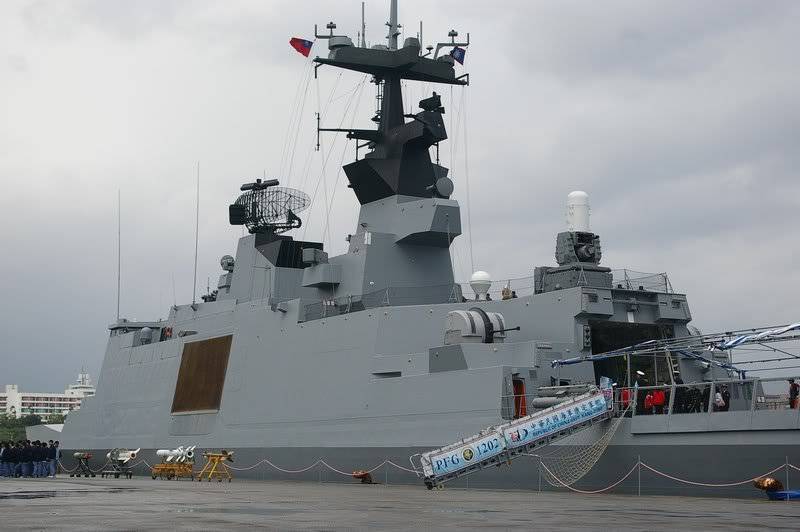
With the exception of this annoying flaw, which they promise to fix by 2017, frigates of the “Kan Ding” type are strong modern ships, possessing good patrol qualities and a solid potential for striking ground and surface targets, as well as covering ships' connections from attacks. out of the water.
Hai Shih Submarines - 2 units
The third rarity of the Taiwanese Navy - submarines of the type "Hi Shi". Former US submarines USS Cutlass and USS Tusk (the Balao and Tench cruising boats) were both incorporated into the 1943-44. and launched in 1945 year! Despite their age limit, both submarines are still listed as active combat units and occasionally go to sea as training classes for training Chinese submariners. According to some data, they now have a limit on the depth of immersion.
Of course, the presence in the arsenal of such "junk" does not do the honor of the Taiwan Navy, on the other hand - why throw out what is working properly? If for the cancellation of these training submarines there are no objective reasons, and their replacement will be associated with additional, sometimes not the most necessary expenses.
The reason for the amazing longevity of the boats "Hi Shi" is the modernization carried out under the GUPPY program. Strictly speaking, what the Taiwanese sailors are using now has little to do with the USS Cutlass and USS Tusk that plied the seas in the 1940s. From the previous boats there was only a solid hull, everything else has undergone global changes.
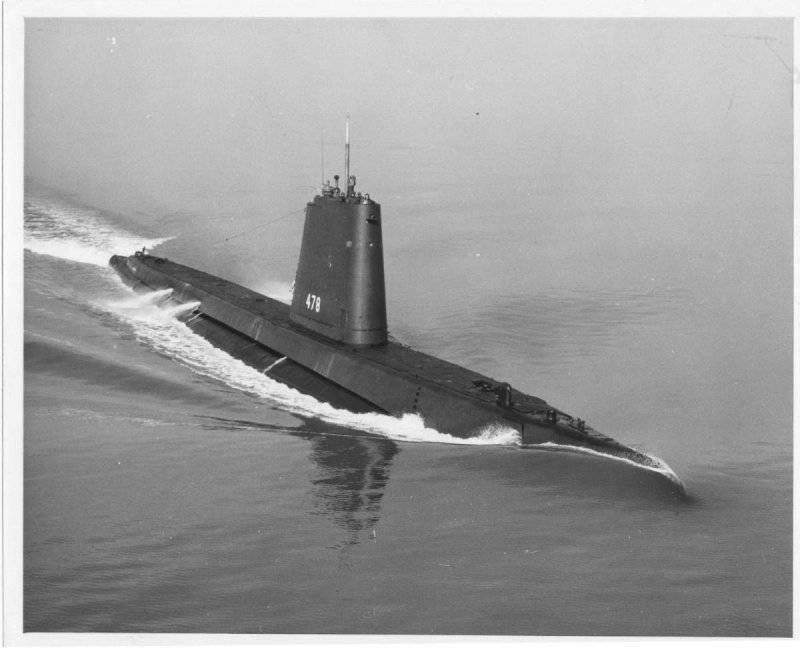
The Greater Underwater Propulsion Power Program (GUPPY) project was adopted in the 1950-s under the influence of the German Electrobot ideas. Exploring the trophy boat, the American designers realized a simple truth: it is worth sacrificing everything - artillery, ammunition, autonomy, comfort compartments, speed in surface position - for the sake of the submarine characteristics of the submarine. All free space was taken by batteries. Their number has doubled. The artillery and the fencing of the cabin were removed, only the narrow streamlined “sail” remained from the cutting itself - all for the sake of reducing the resistance when moving under water.
Max. submerged speed increased to incredible 17-18 knots, cruising range increased to several hundred miles. Equipped with modern sonars and radars, the boats of the war years found a second life - upgraded by the GUPPY project, they turned into formidable underwater opponents and were used in the US Navy right up to the beginning of the 1970s!
A similar boat (“Santa Fe”, formerly USS Catfish) was actively used by the Argentine Navy during the Falkland conflict, 1982. The old boat died, nevertheless, fulfilled its mission, delivering a group of assault forces.
So it’s too early to discard old Taiwanese submarines - they are still able to show off their strong fangs. It is curious that both boats were transferred to Taiwan in the form of training units: without ammunition and with brewed torpedo tubes - however, the sly Chinese restored the boats, equipping them with modern Italian torpedoes. A caring attitude to technology works wonders - for years already 40 “Hai Shi” and “Hai Pao” regularly serve under the blue-red flag of the Republic of China.
In general, the underwater component is the weak point of the Taiwanese Navy. In addition to the two combat training submarines from the Second World War, the fleet includes only two operating Chi Lung submarines built at Dutch shipyards at the end of the 1980s. Such a scornful attitude towards the submarine fleet once again proves that Taiwan is not going to fight seriously with anyone - all of its menacing flood ships serve only to carry out representation missions, demonstrate strength and participate in international exercises to maintain the prestige of their country.
Afterword
In addition to the combat units listed above, the Taiwanese Navy includes 16 multipurpose frigates (8 built under license by the long-hull Oliver H. Perry and 8 Knoxes from the US Navy), the Ankor-type amphibious assault-carrying dock-type, two tank landing ships of the type “ Newport, 10 minesweepers and 40 + missile and patrol boats. The naval aviation has anti-submarine “Sea Hawk” helicopters and light “Hughes 500MD” patrol helicopters - only about three dozen units. Anti-submarine and S-2T Turbo Trekker (26 in the ranks, half of them fly) are gradually replaced by P-3C Orion: the first 12 of the ordered aircraft arrived in Taiwan in November 2013.
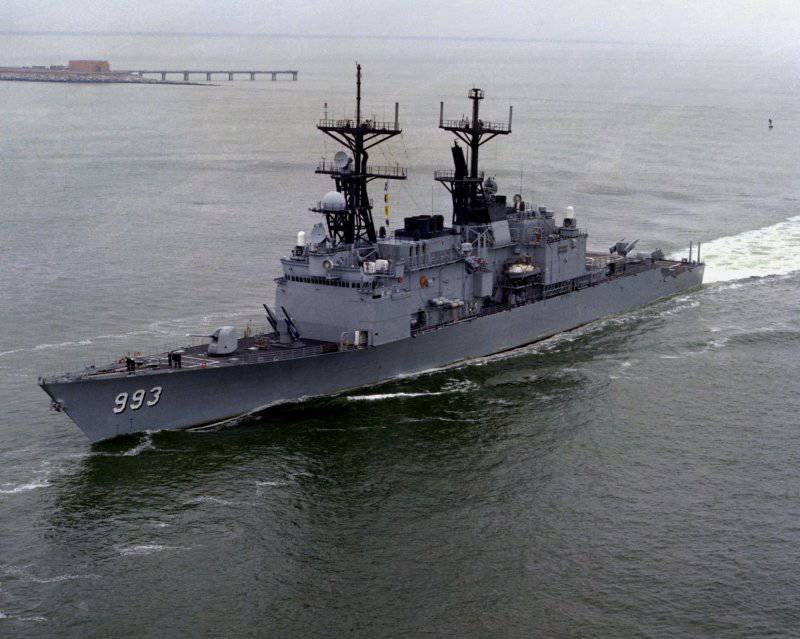
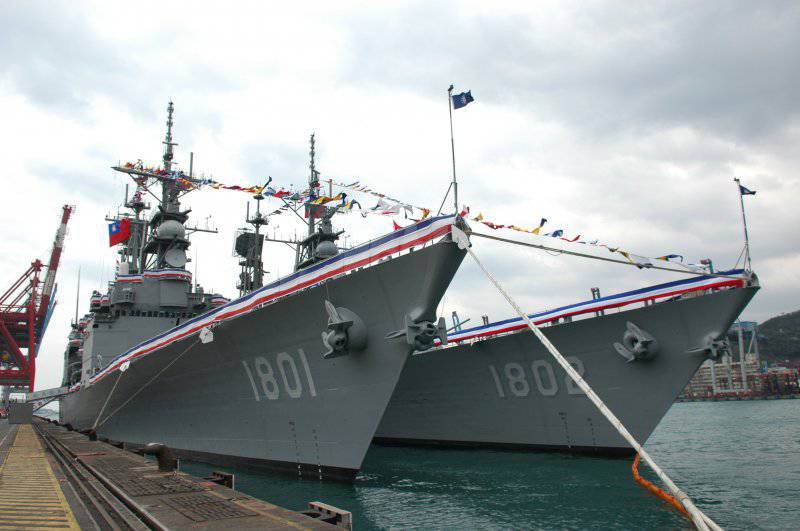
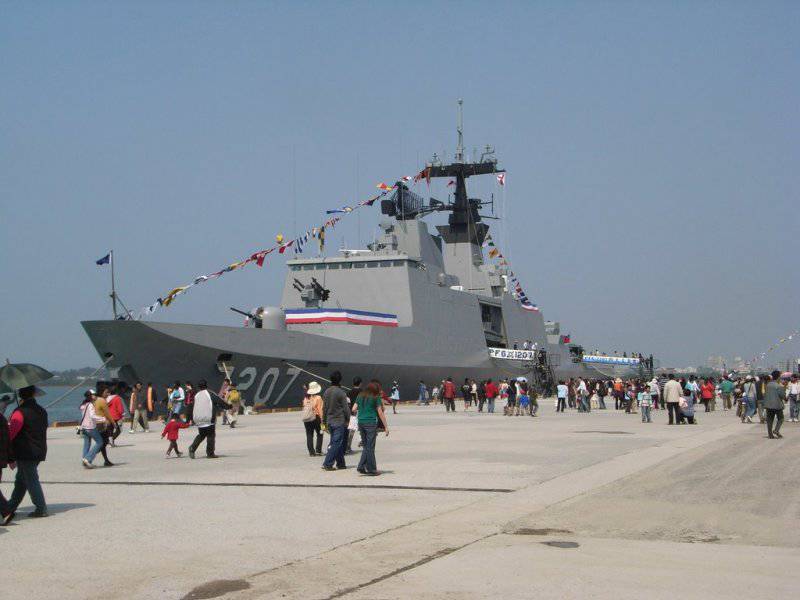
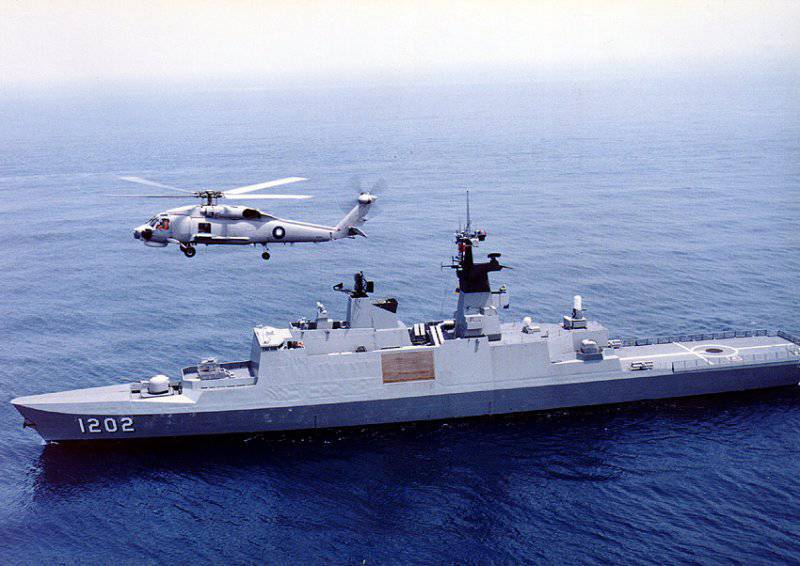
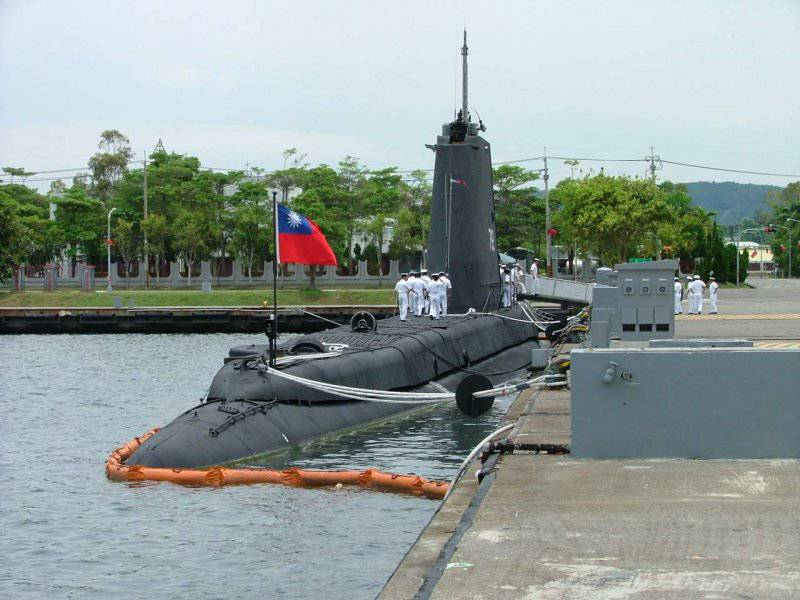
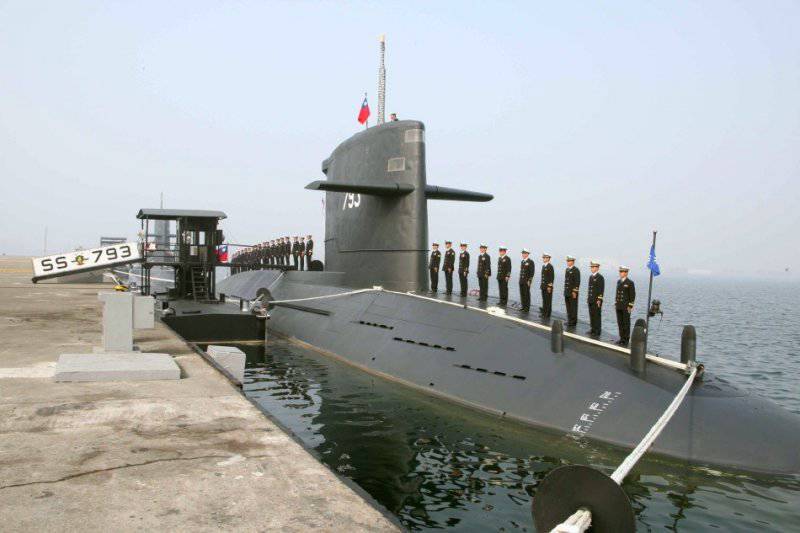
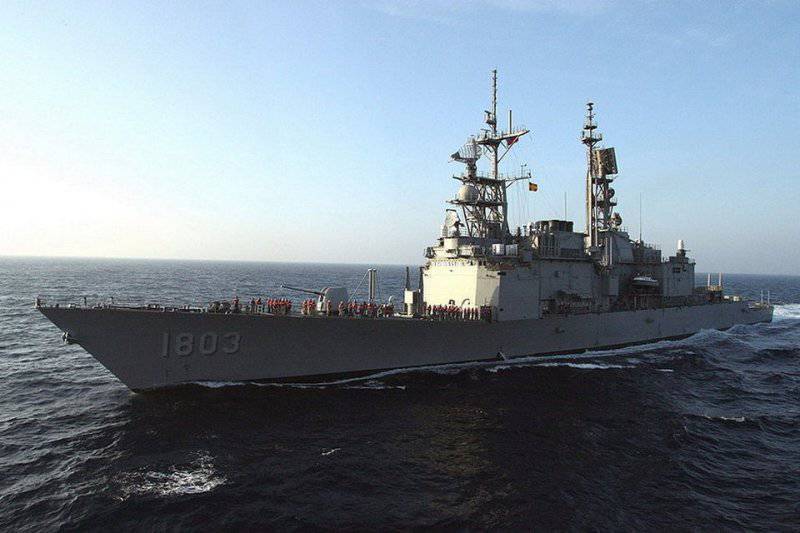
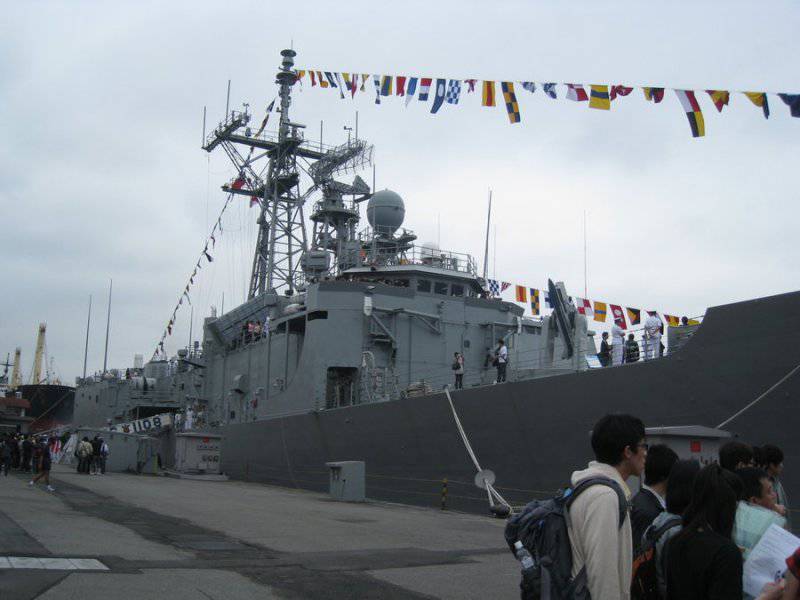
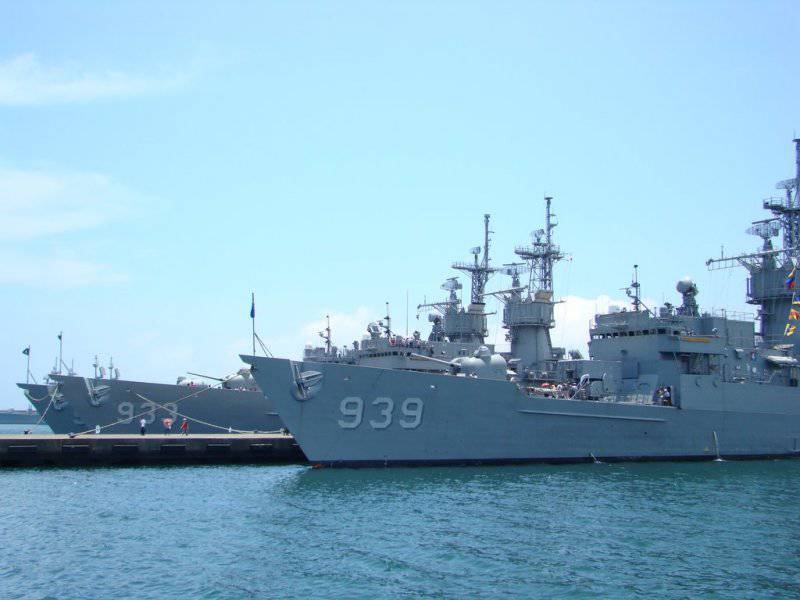
Information